Overview
As part of the design research process for Teambuilding America, I hosted two co-creation workshops to learn what people really want to see in an ideal American future.
To do this, I hosted small groups of people for a facilitated discussion about our frustrations with and hopes for America. This was followed by personal, paired, and group ideation around what our ideal futures look like for the country, as well as a conversation about the significance of having a shared vision. Finally, these visions were made real by creating our own American flags and using these as artifacts to consider the what the aligning values would need to be for our ideal Americas to exist.
Photography and videography by John Boran, Nick Smith, and myself.
Goals
➔ Gain understanding around challenges to thinking beyond the present state of the country.
➔ Gain understanding around the effects of developing a future vision on present perceptions.
➔ Gather a small sample of future visions of the country.
➔ Probe feelings on the possibility and necessity of developing a shared vision for the country.
➔ Test whether or not a shared vision is possible for a small group.
➔ Gather a small sample of aligning values and symbolism needed for ideal futures.
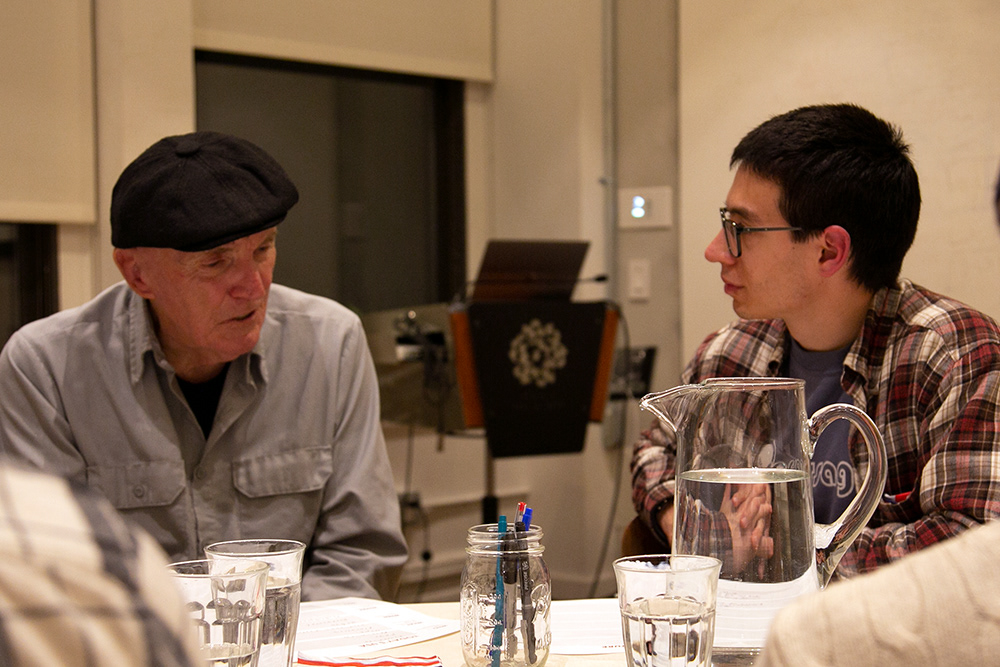
Hugh and Nick discussing their ideal futures
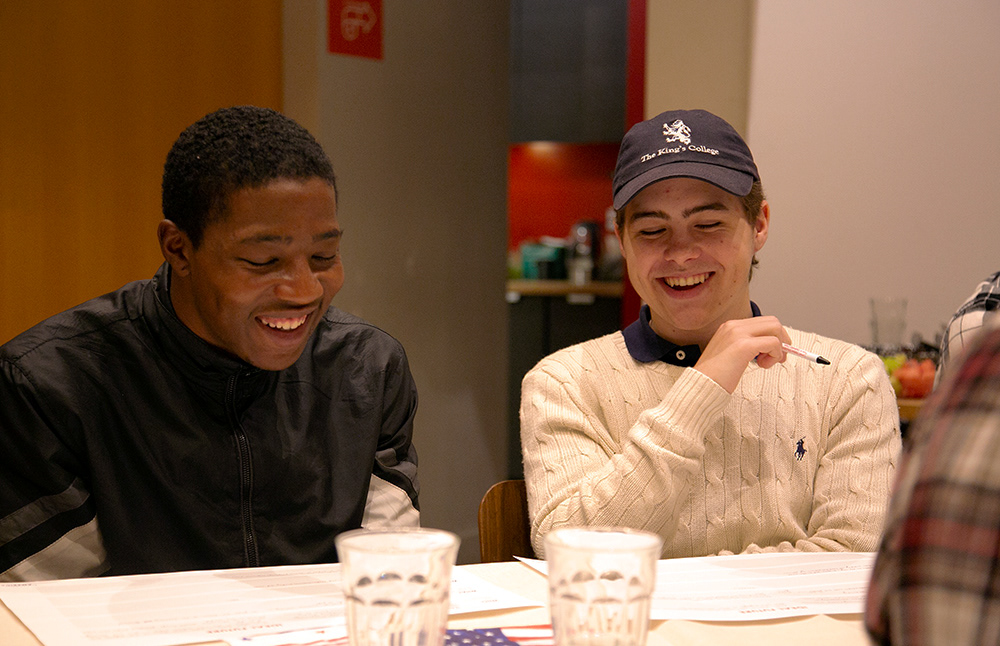
Lacoy and Bailey finding similarities in their ideal future Americas
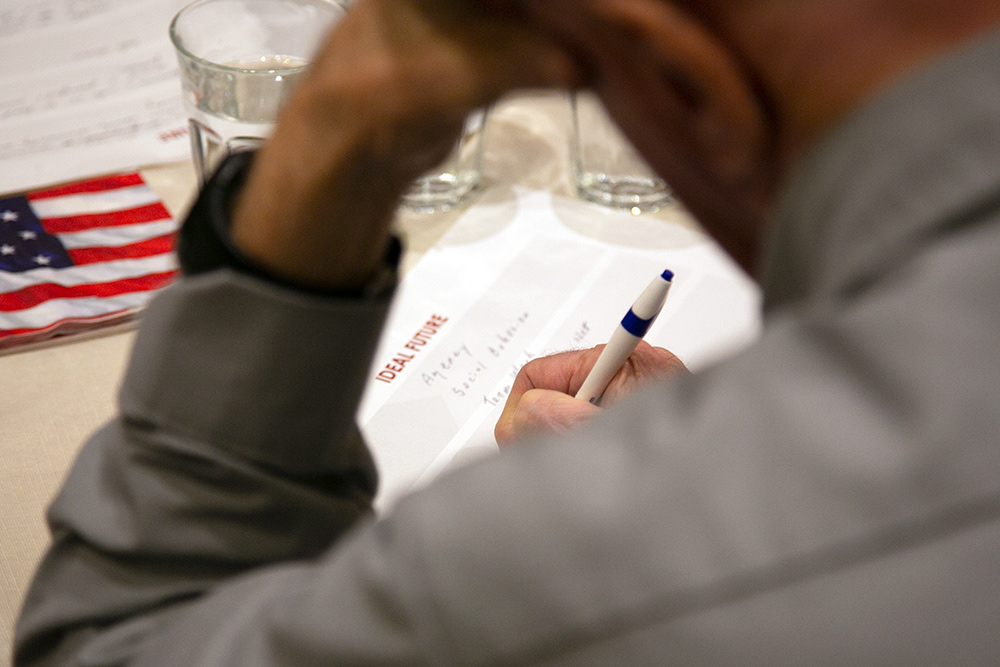
Writing the "who, what, where, when, why" of future America
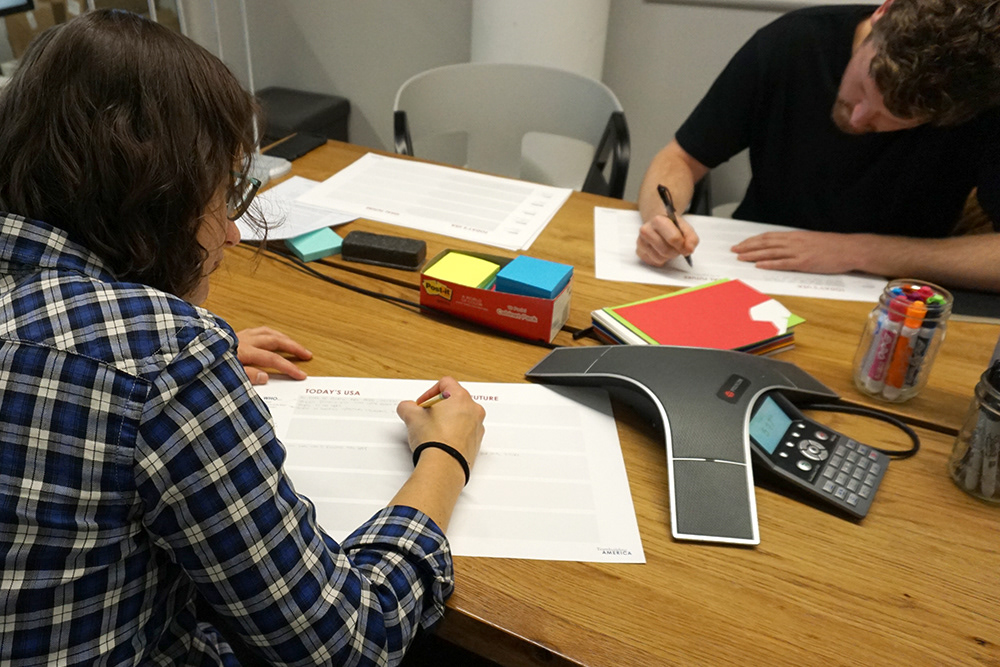
Alexia and Jack thinking about their Americas
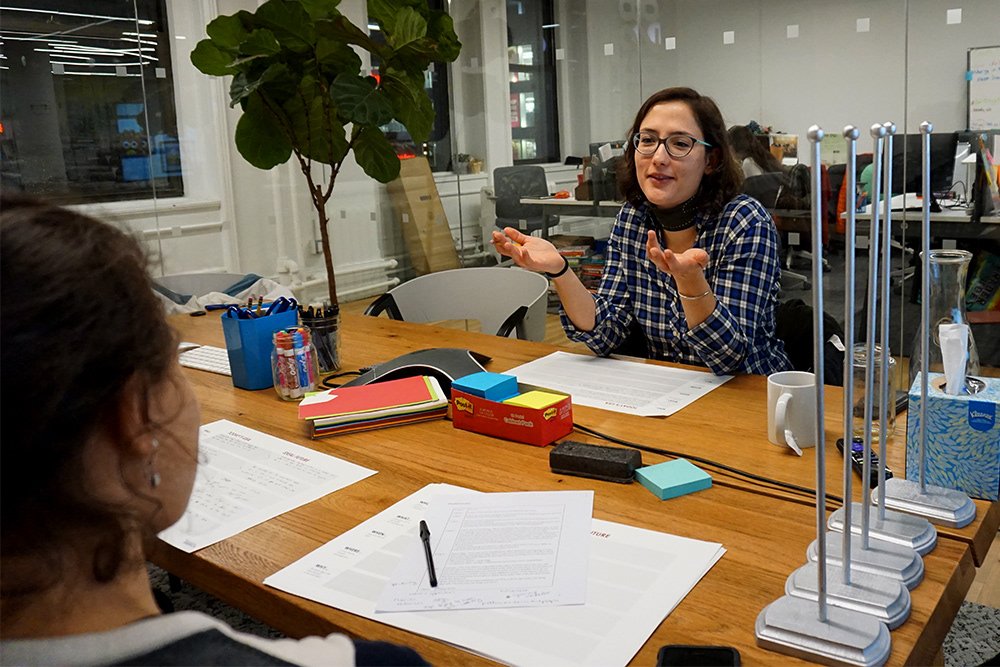
Alexia sharing her ideal future for the country
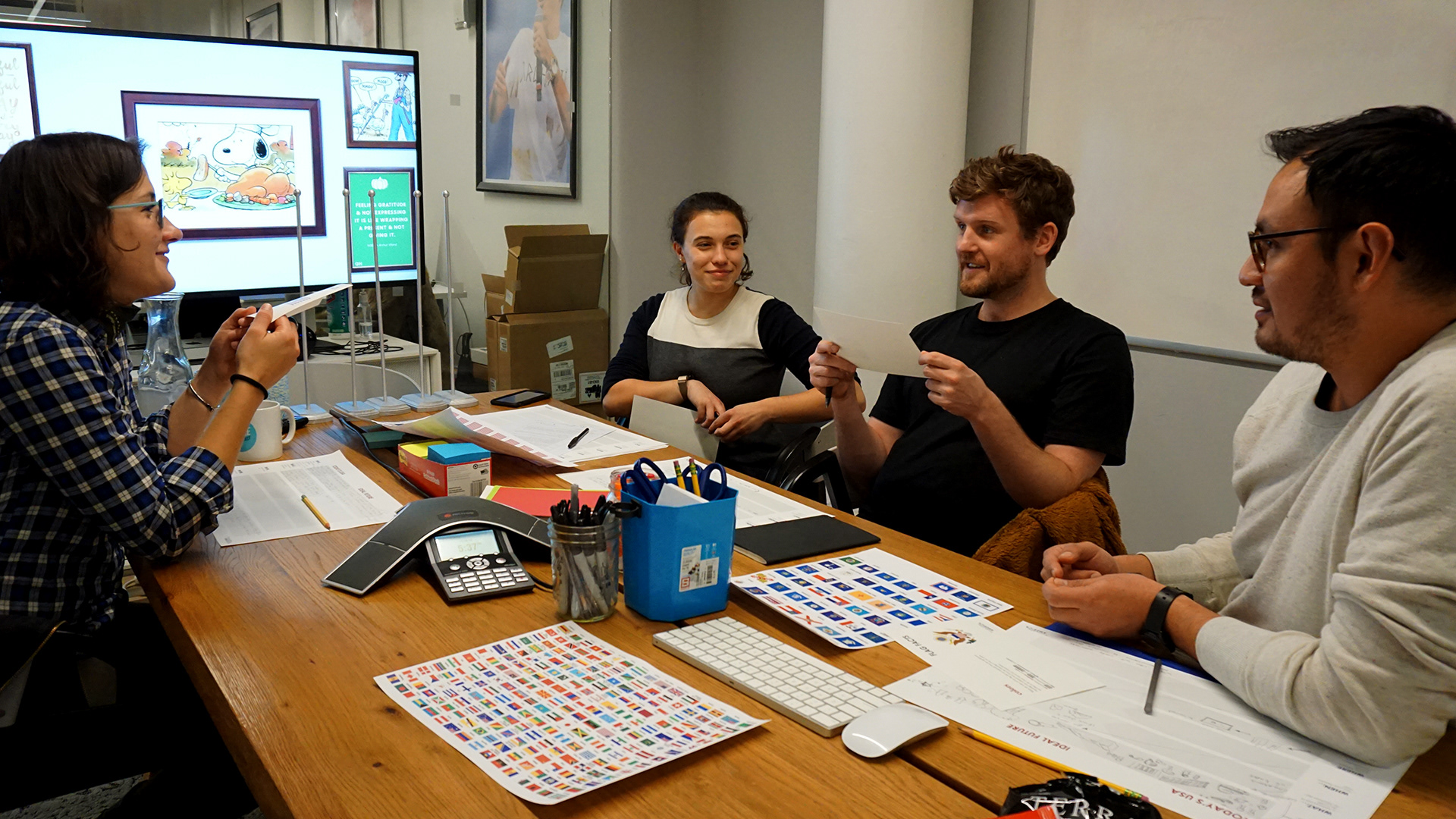
Alexia, Jack, and Miguel reading flag facts
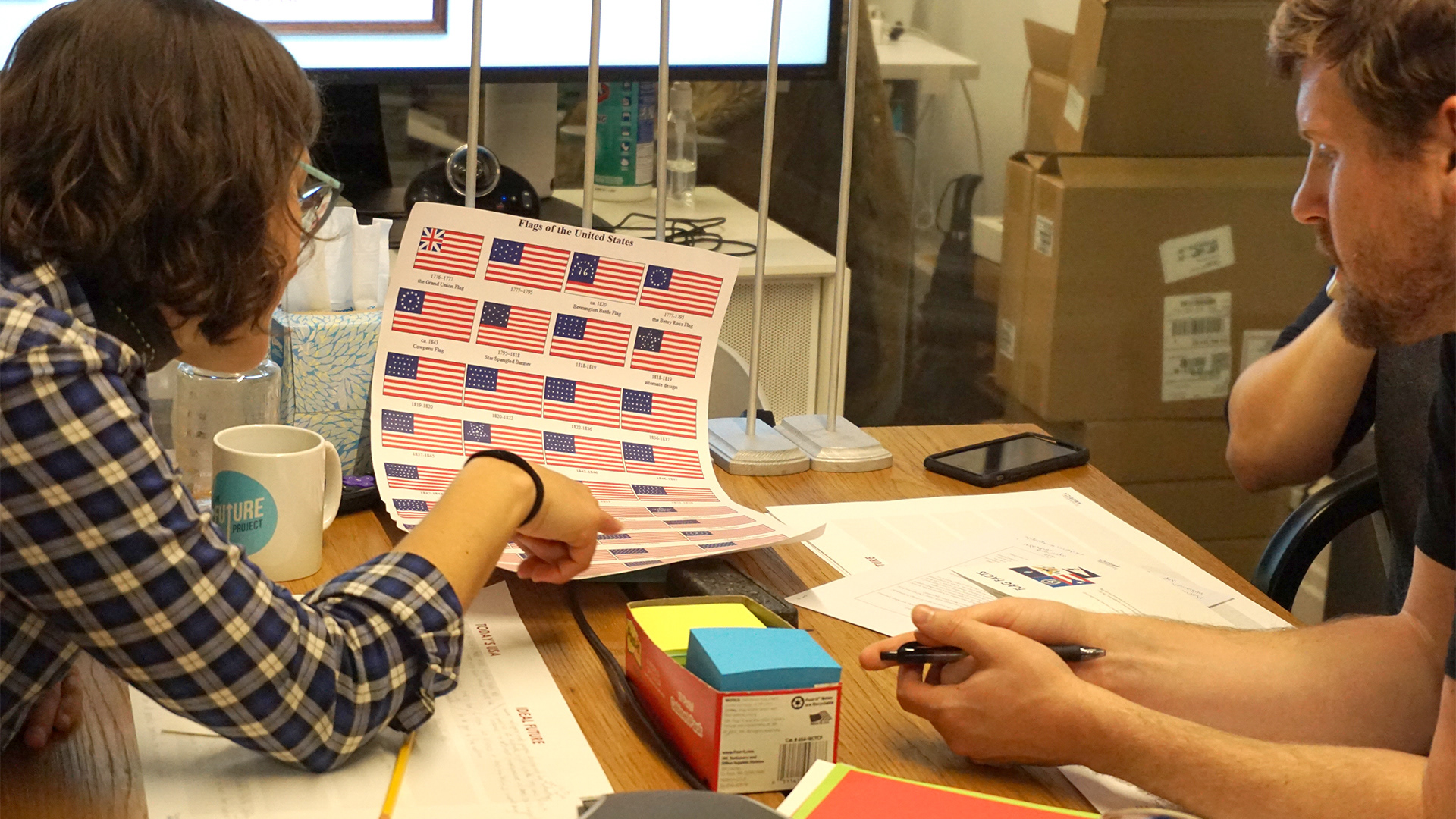
Looking at every past version of the flag, for inspiration
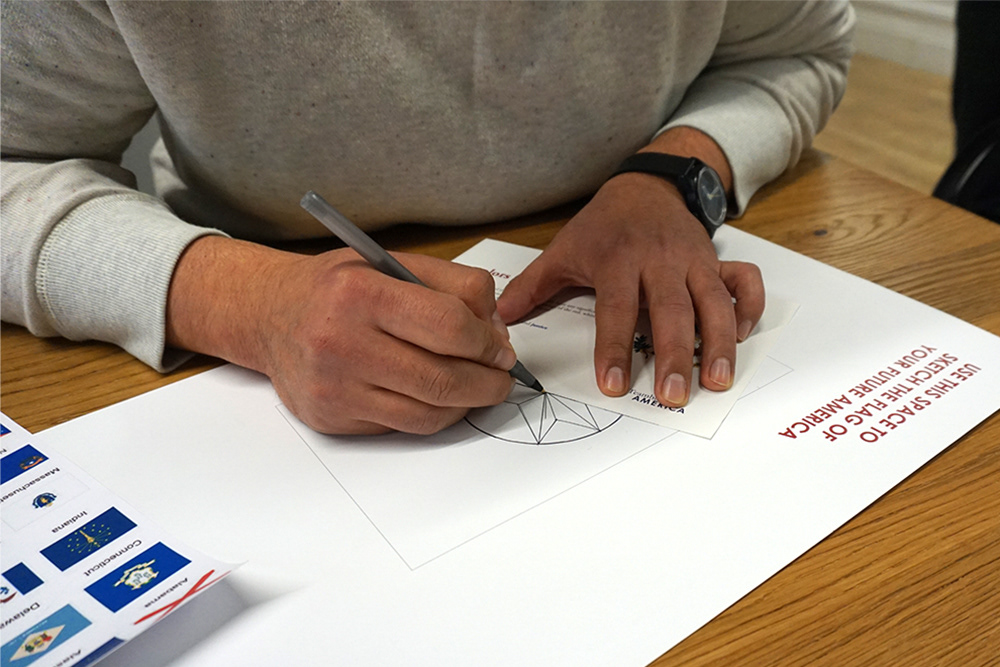
Miguel sketching his American flag
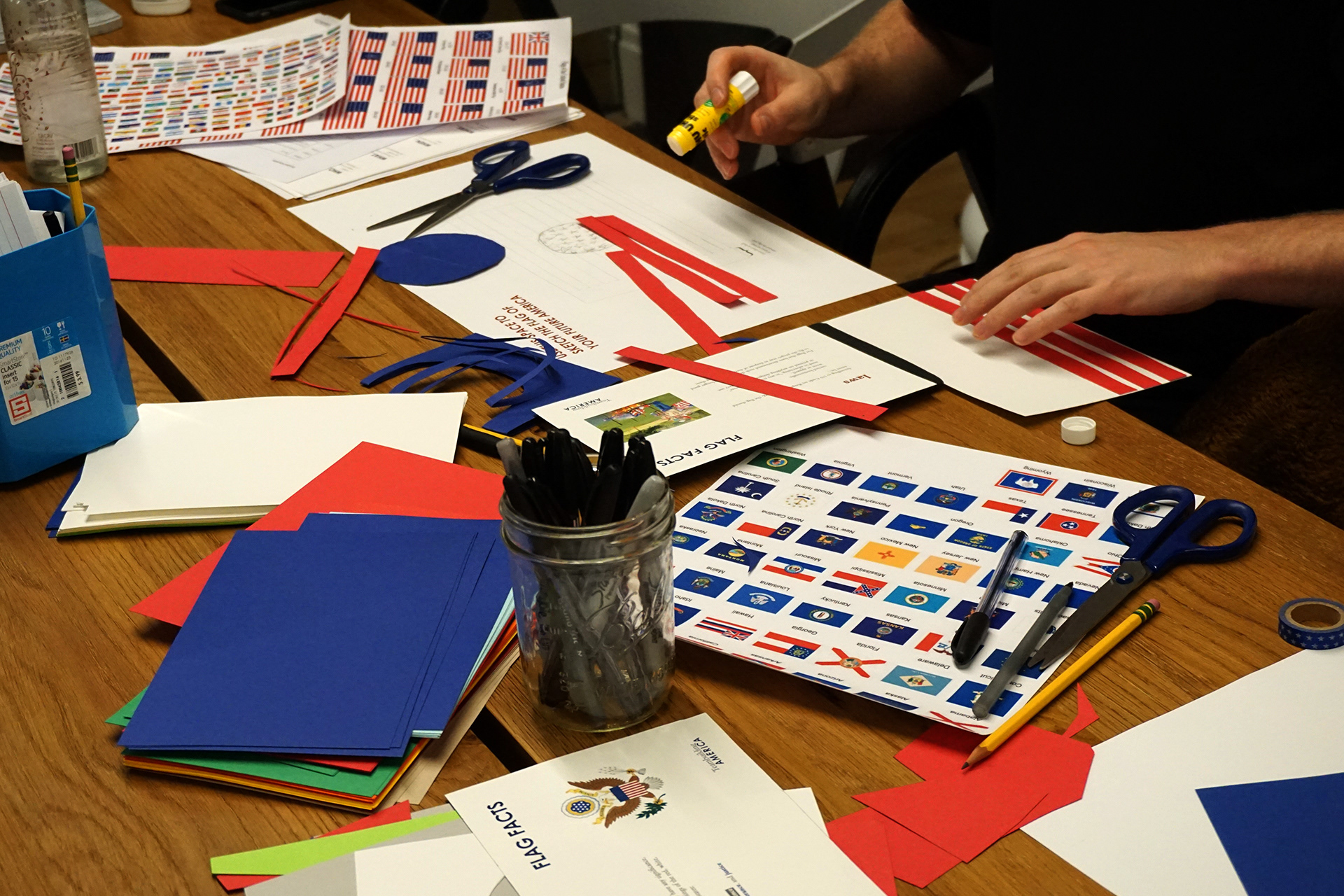
Things got a little messy while making flags
Participants
While one of my goals was recruiting for political and social diversity, this proved challenging. Fortunately, for the first workshop I was able to partner with Make America Dinner Again, which allowed me to become a host and recruit individuals in the New York City area who were already interested in having these sorts of conversations. I also shared the event on a couple of different Meetup pages. Ultimately, the participants ended up being mostly liberal (thank you to our one brave libertarian), but certainly fell along a left-wing spectrum. During the actual event, however, I intentionally did not ask participants to self-identify their political beliefs. It only came up when one of the participants asked the group.
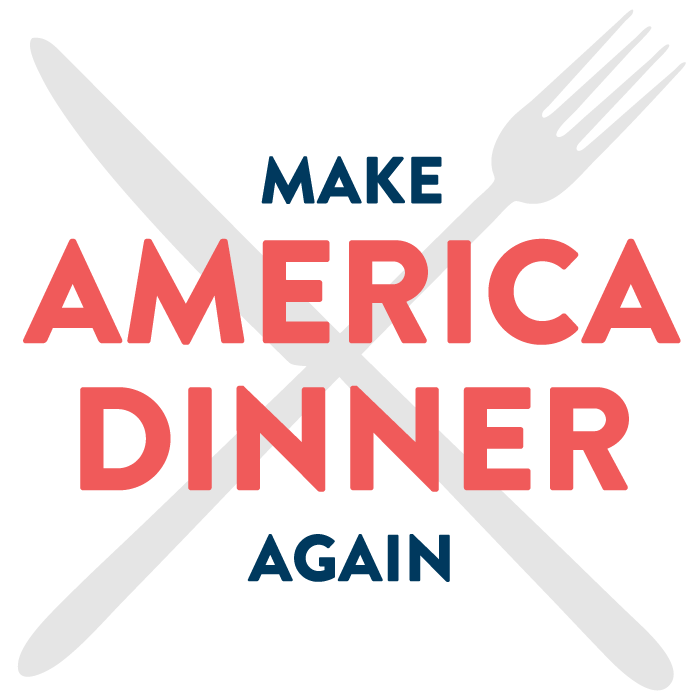
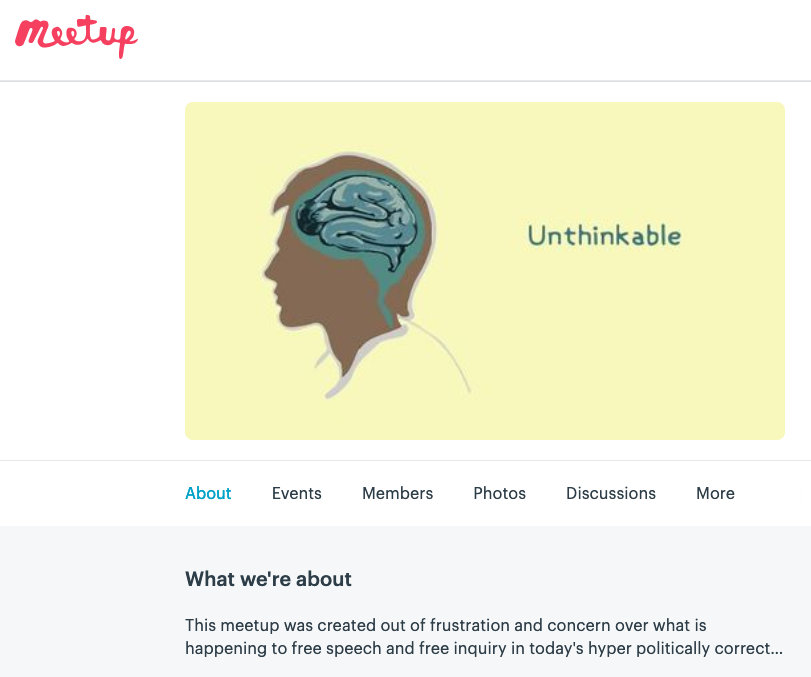
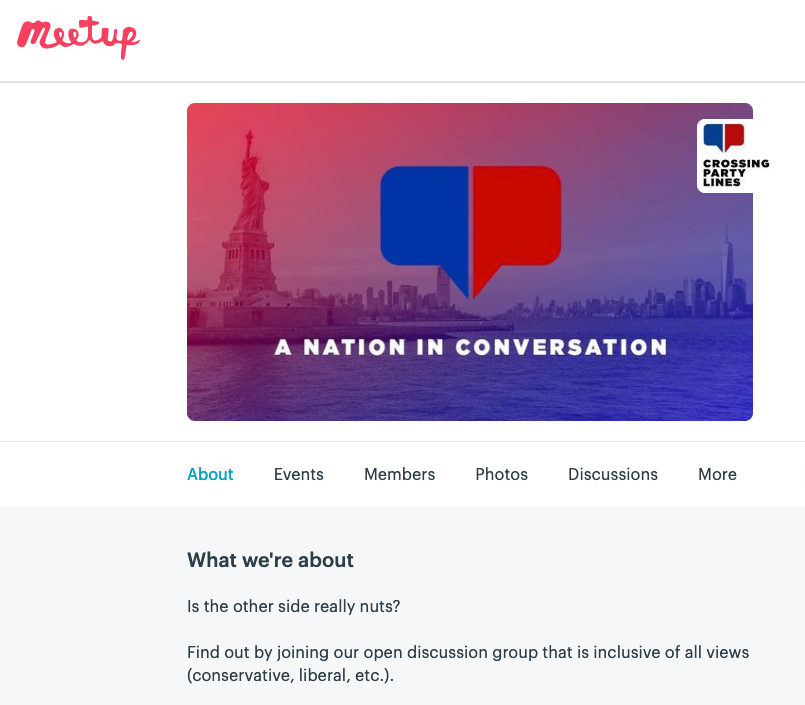
Preparation
To give these events the necessary vibe, I needed to prepare the right tools. I needed participants to feel open, fun, friendly, and a little silly, but also respect, a bit formal, and important. Fortunately, I have a lot of fun creating experiences like this; they are like puzzles where you have to think about the precise details of each piece needed to fill a hole. Here is a small window into my planning:
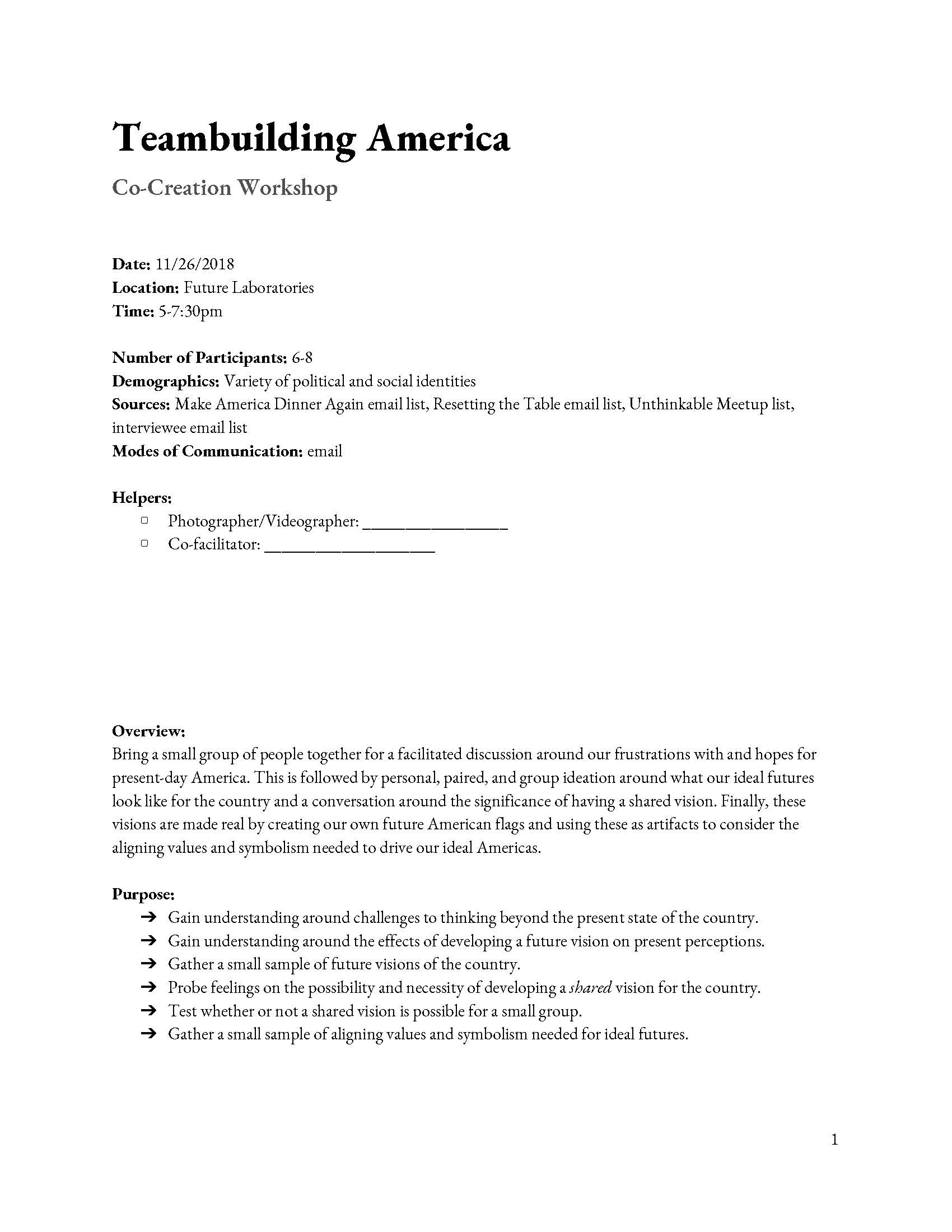

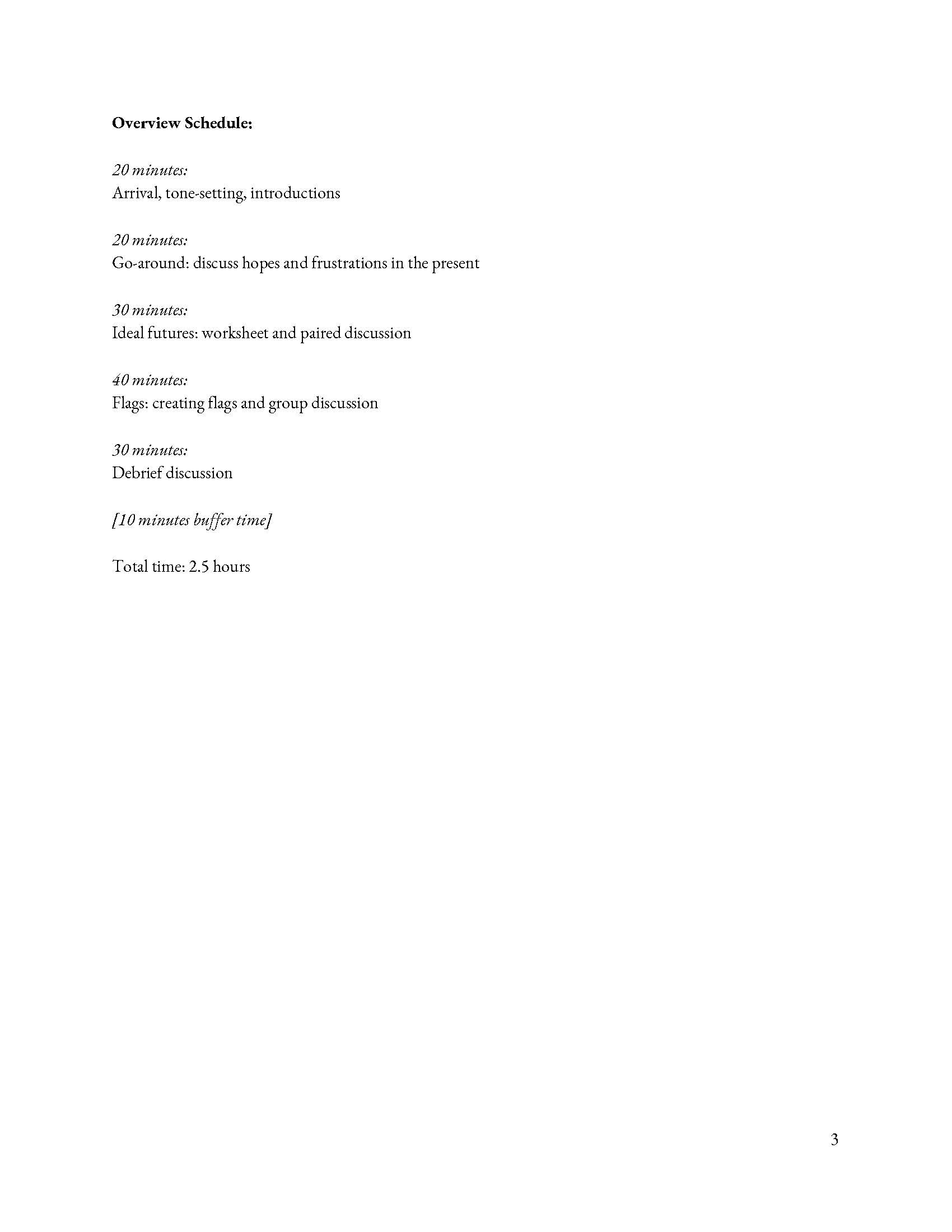
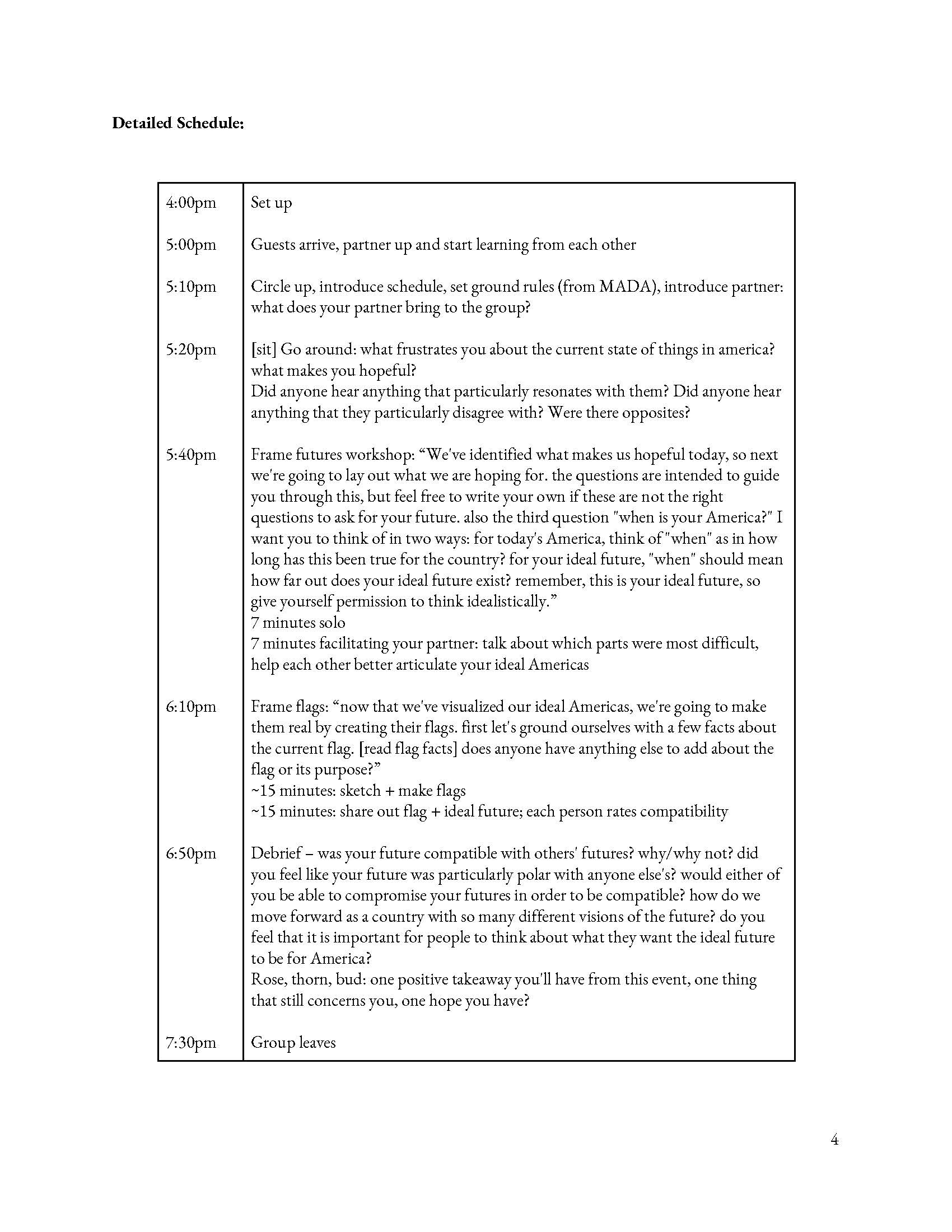
Keeping it neat and readable made it easy to share this with helpers and other stakeholders.
For the first workshop, where I had specifically partnered with Make America Dinner Again, I needed to figure out how to host a dinner gathering. The location I had originally wanted fell through, my apartment was too tiny, and I was on an increasingly tight time and money budget... so I finally decided to host it in one of the classrooms at my school. Here is how I set it up:
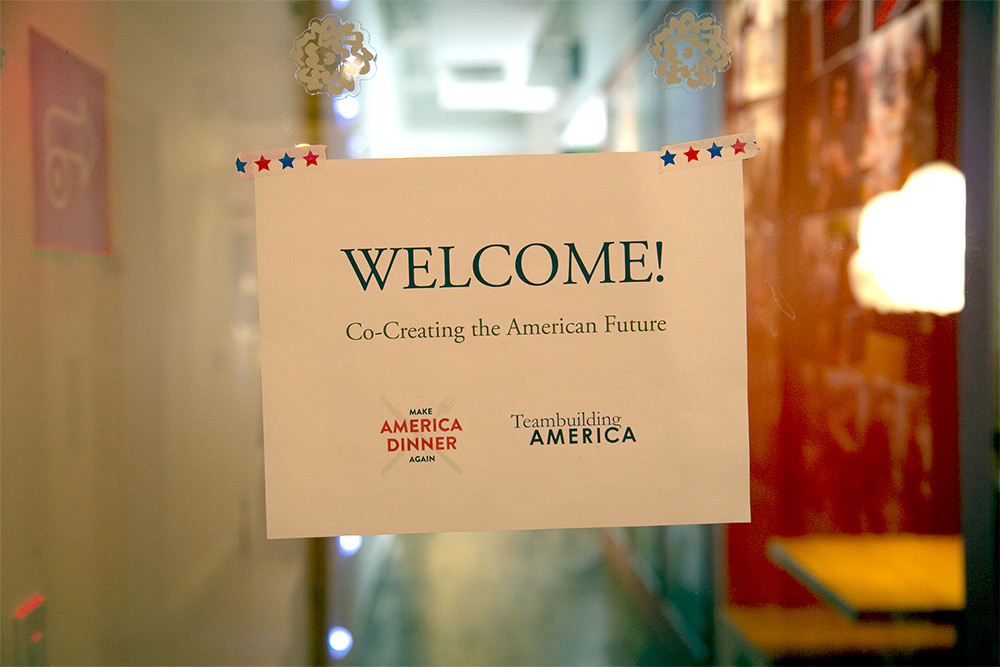
Directional signs in the halls

I set the dinner table along the diagonal of the room, with the activity tables along the edges
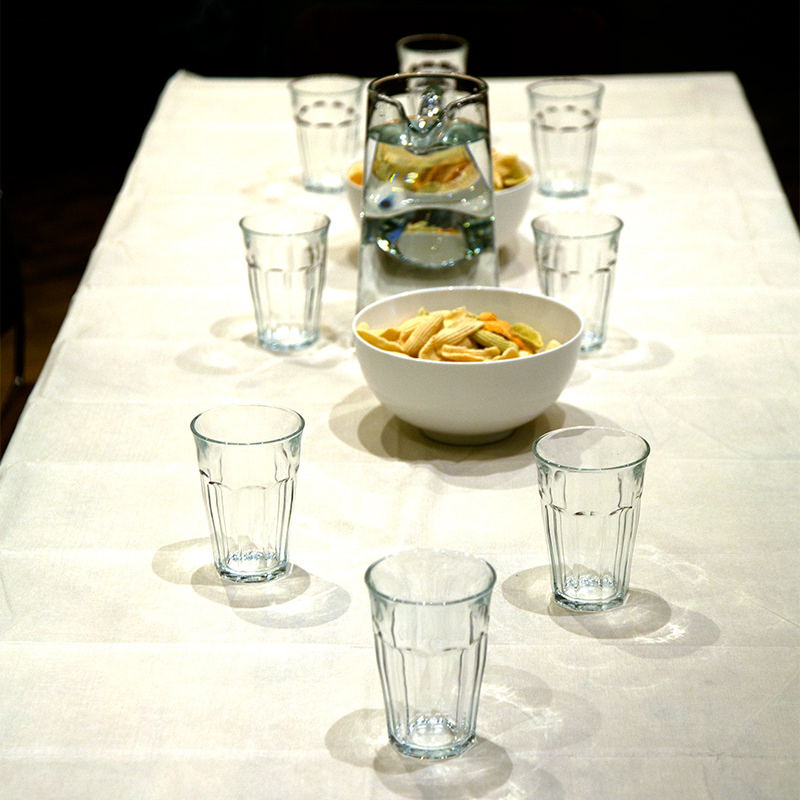
I wanted the table to look nice when guests arrived, but not fully set
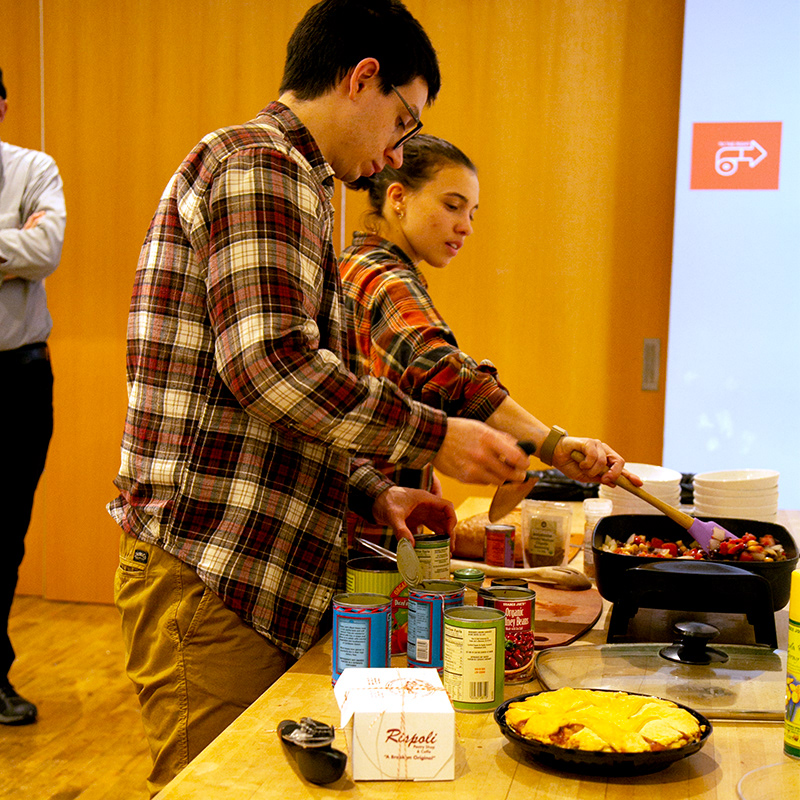
I timed it so that guests could help finish up dinner prep when they came in. The vibe needed to be more family dinner than restaurant
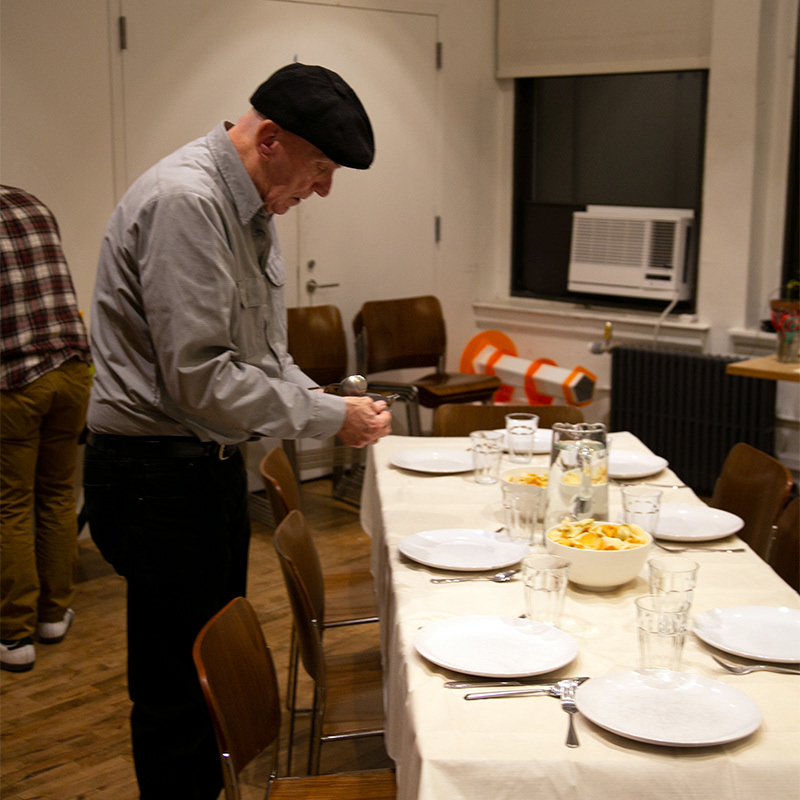
Our first guest, Hugh, helped finish setting the table
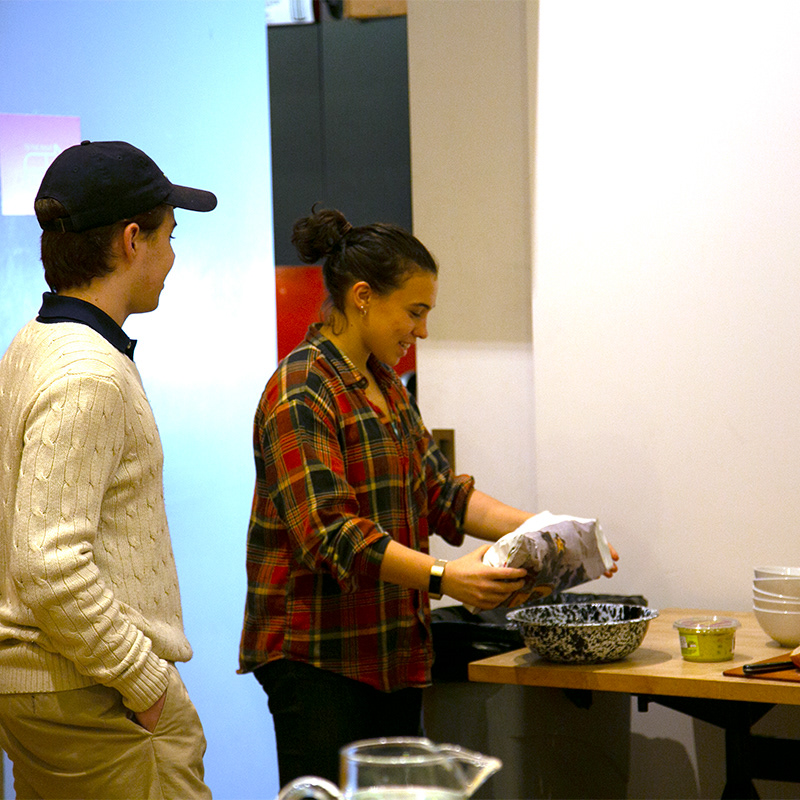
I made the event a potluck to encourage accountability in showing up and allow people to contribute. Bailey was nice enough to bring chips and guac
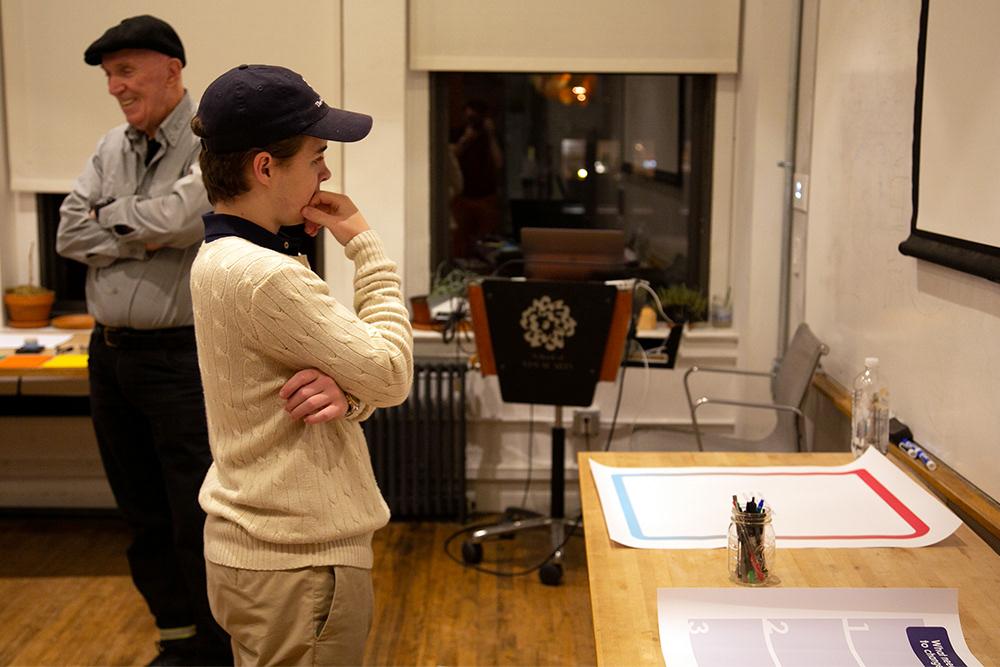
I also laid out interactive posters on one of the tables to engage guests before we got started. While guests were shy about writing on them, they did enjoy discussing the questions
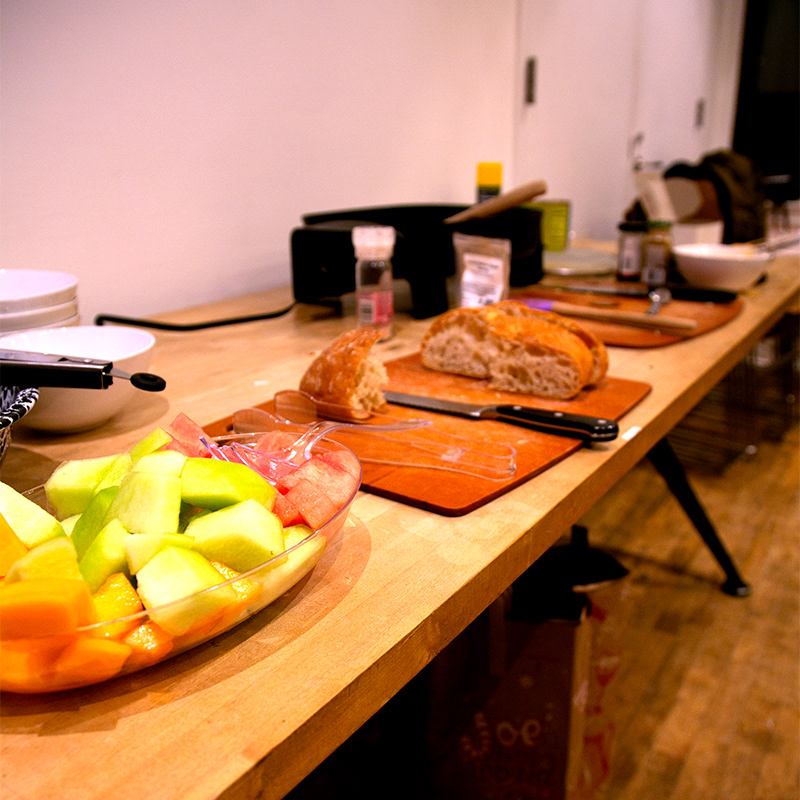
While I provided most of the food, each guest brought something to share. We laid it out on our food table, to keep the main table neater
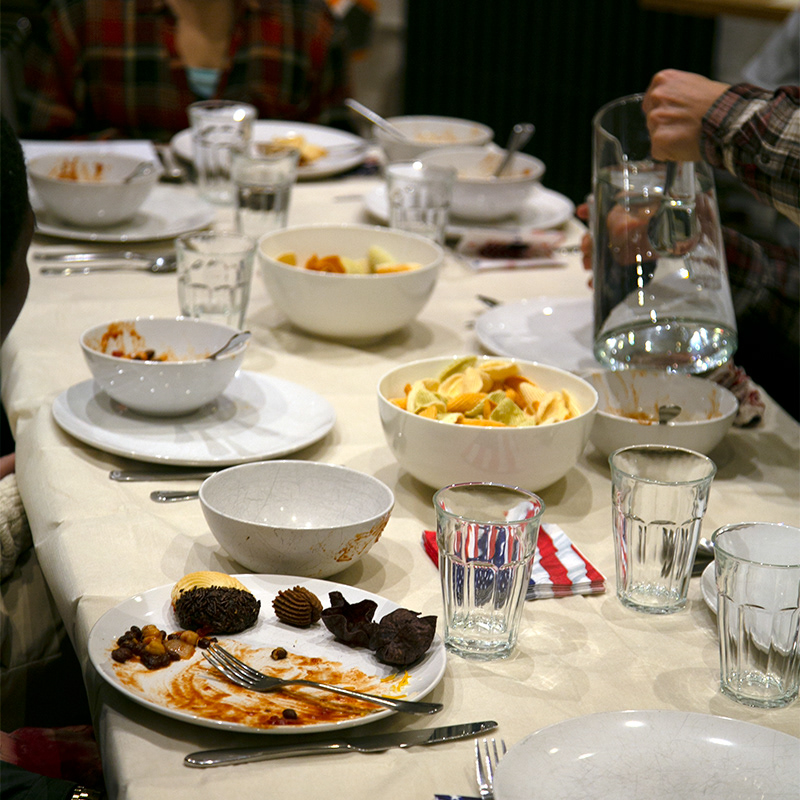
My department's matching dinner ware, along with the table cloth and flag napkins I purchased, really set the scene
In both workshops, the collateral I created for each activity was critical for both getting the results I needed for my research and keeping the event fun and cohesive. In the second workshop, where I did not have the benefit of prepping the room beforehand, these artifacts really made the workshop.

Jack looks at state flags while Miguel draws pictures to represent his Americas

Flag facts, like this one about its origin, helped set the tone to think a bit more loosely about the American flag before we made our own
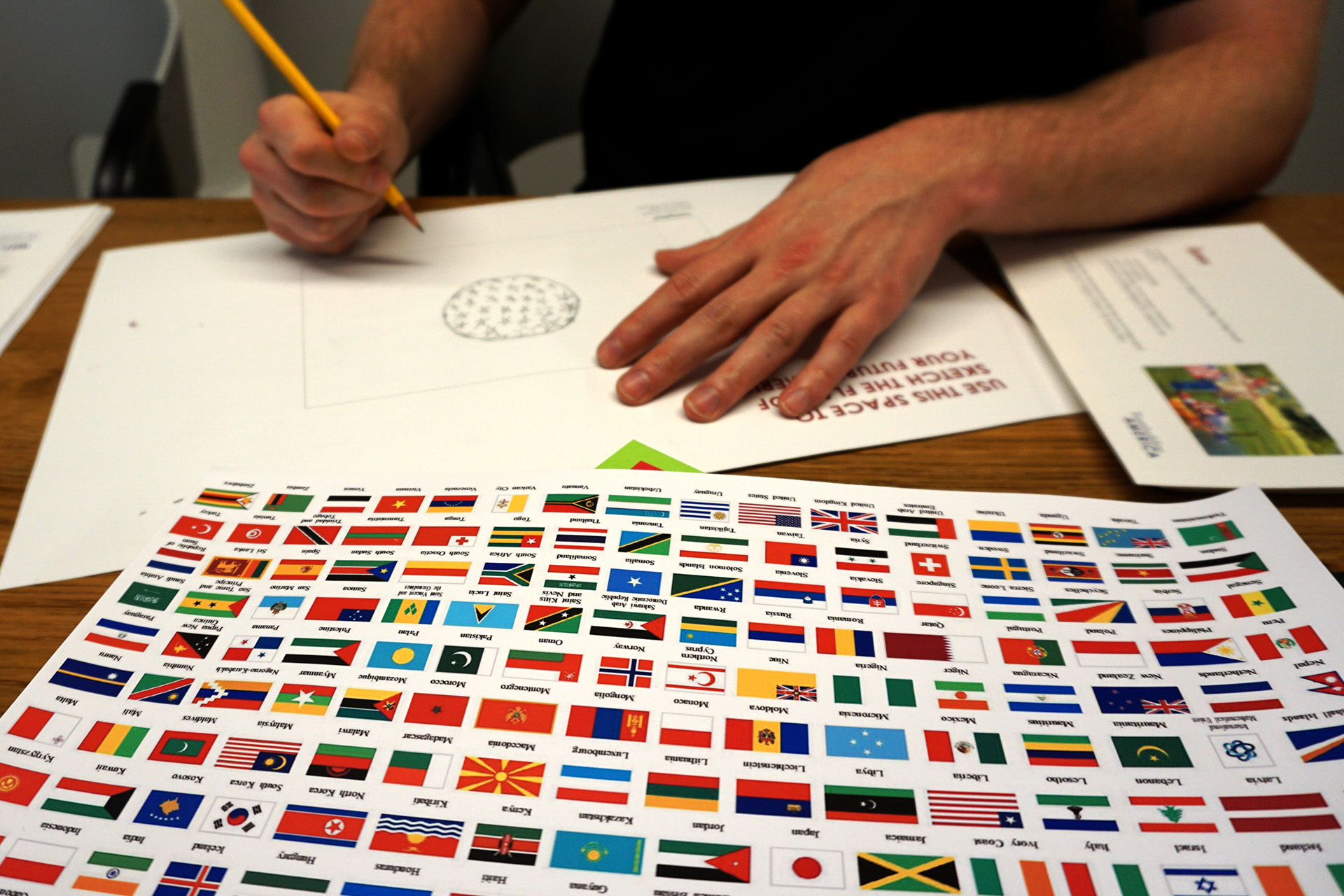
Having space on the back of the worksheet to sketch helped most participants, even people under-confident about their art skills

The flag has changed 27 times since its initial creation–on average more than once every ten years. I provided this poster to help open participants to the idea that it can change again
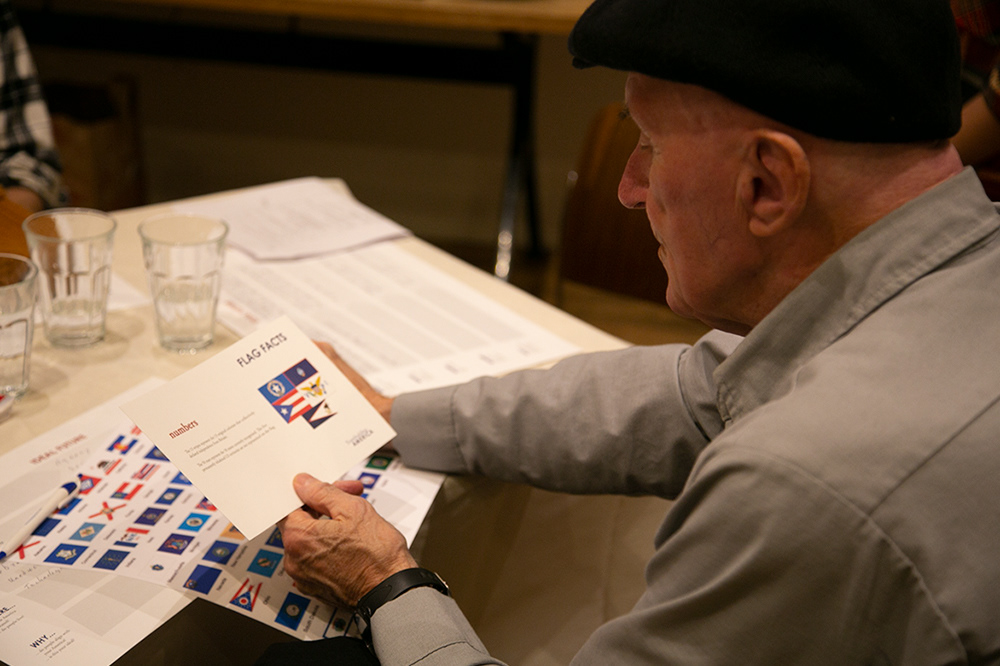
Shown on the table is the poster of state flags, which provided examples of the diversity of flag designs within the US. Having participants read these flag facts out loud to each other was a nice way to transition the event from a discussion to craft time
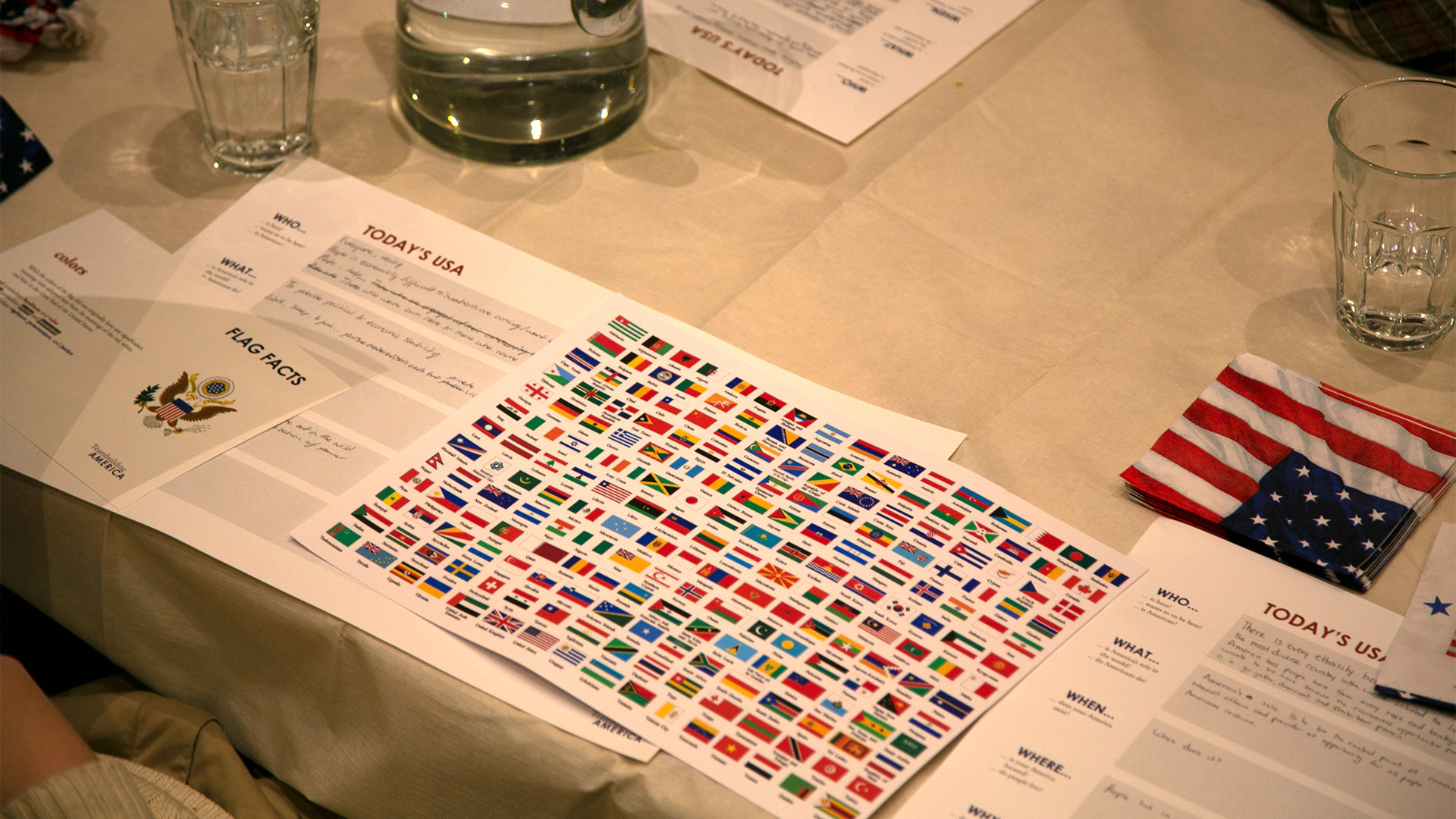
I also printed this poster with the flag of every country, hoping that the variety of colors might inspire some participants to think beyond red, white, and blue
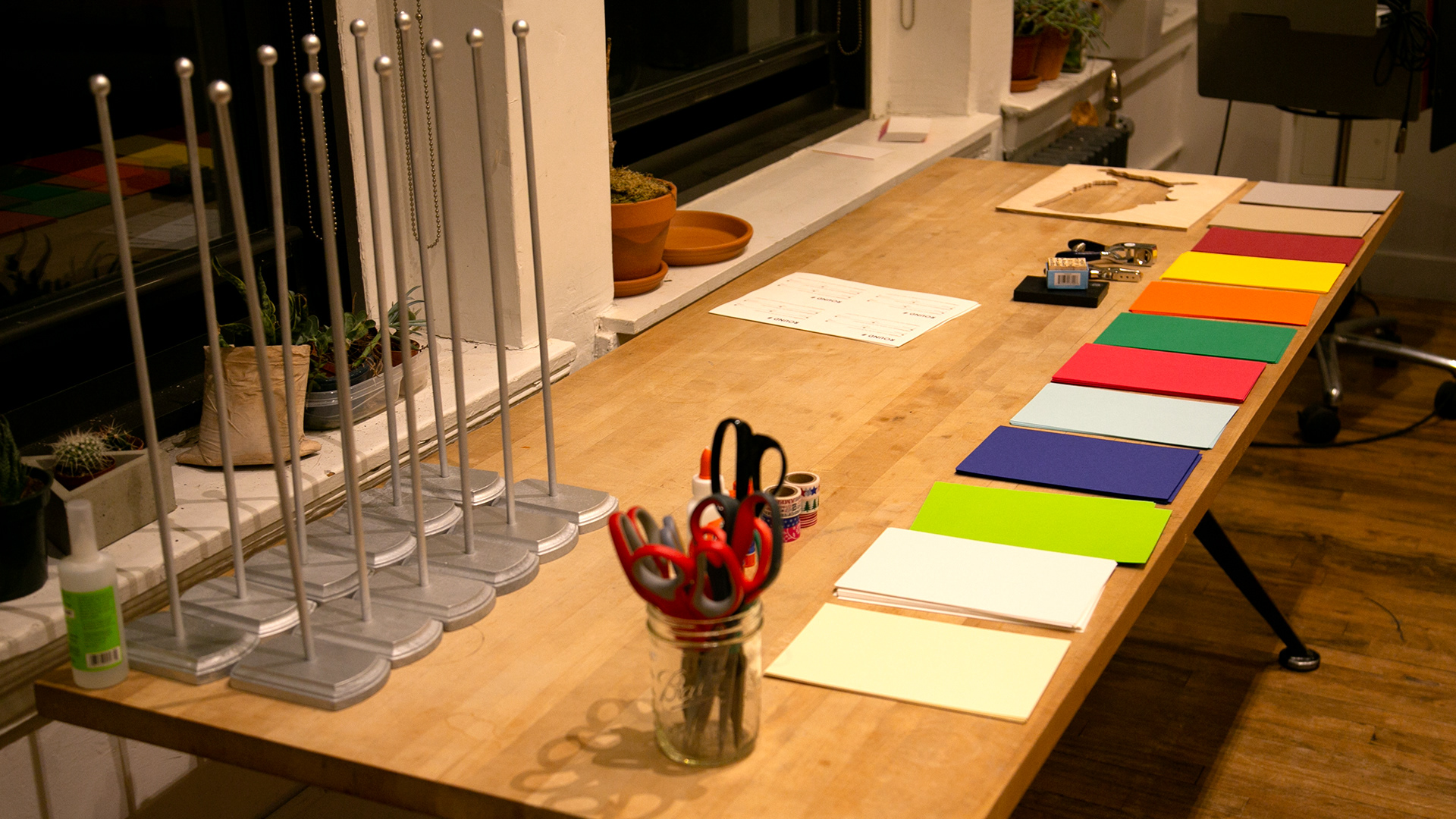
In addition to those paper assets, I created miniature flag poles, cut and curated various colors of card stock, and provided other art supplies that I hoped would help people create some non-traditional flag designs. These included washi tape, stamps, and hole punches
While I had been originally planning to provide cloth and felt for flag-making, my advisor Allan Chochinov persuaded me otherwise. He reminded me that I needed to make it easy for participants to make flags that would look good, and that I should be thinking in my event-planning about how I would want everything to look in the photos and videos. This was new for me, since I had previously done most of my experience design in outdoor settings with existing props, where I did not need to worry at all about documentation. This was a fun added challenge, and I took Allan's advice. The flag poles were his suggestion. I made them from some pre-fab wooden awards plaques from Michael's, wooden dowels, and wooden beads to top them off.

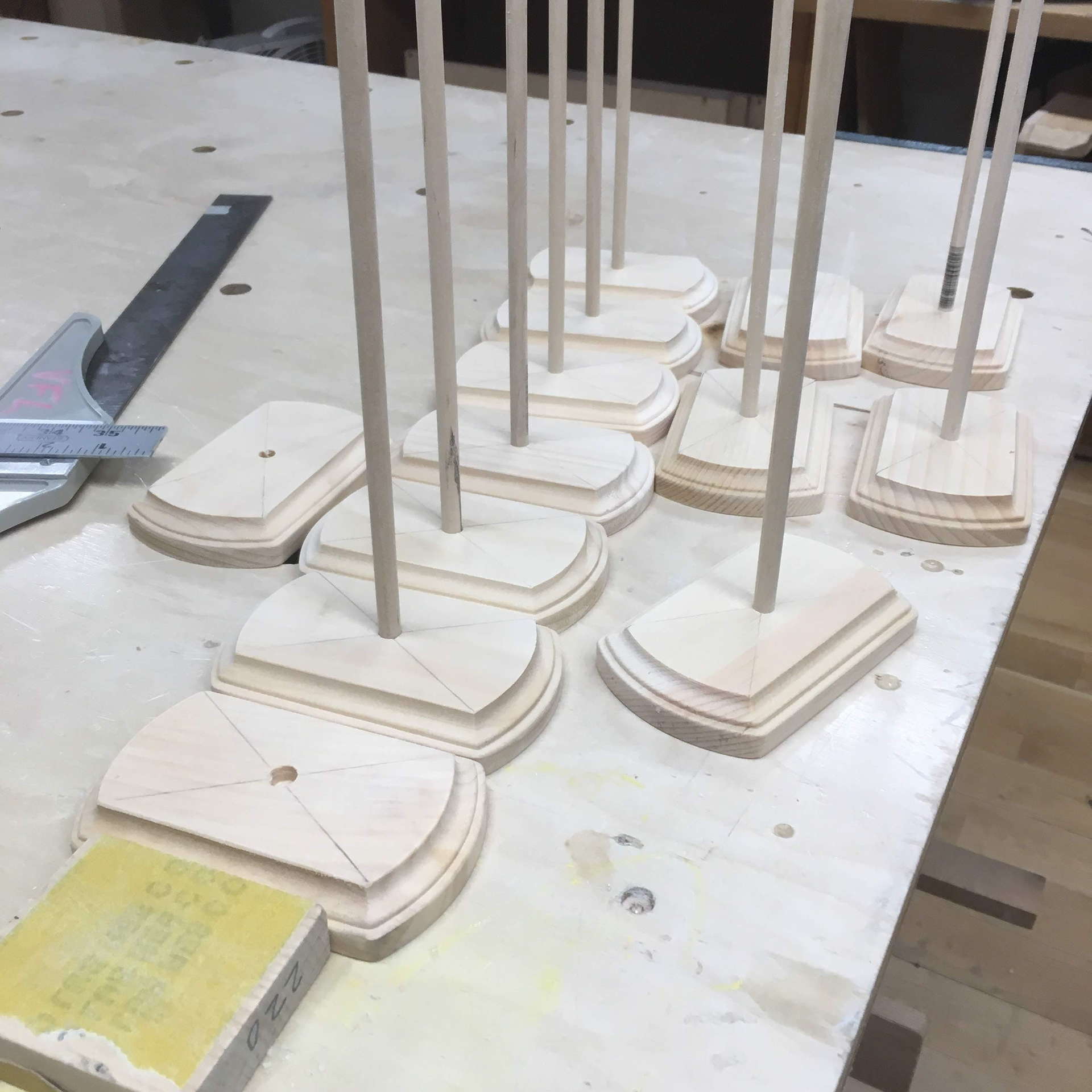
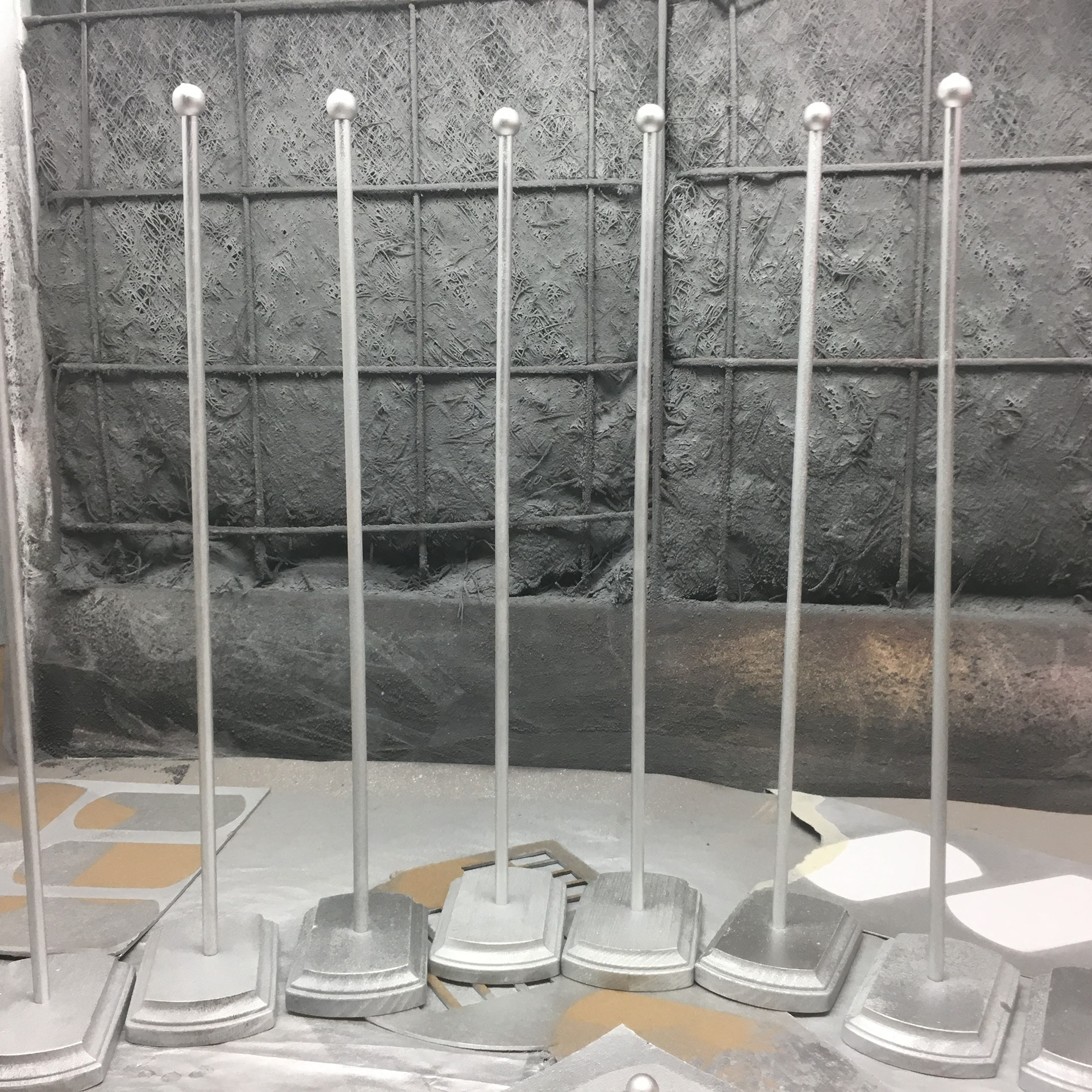
Outcomes
Before participants created flags, they filled out this worksheet that I created to help scaffold their thinking. The responses were fascinating; there was really interesting alignment around, in particular, who and what they wanted America to be in the future. Below are a selection of the worksheets.
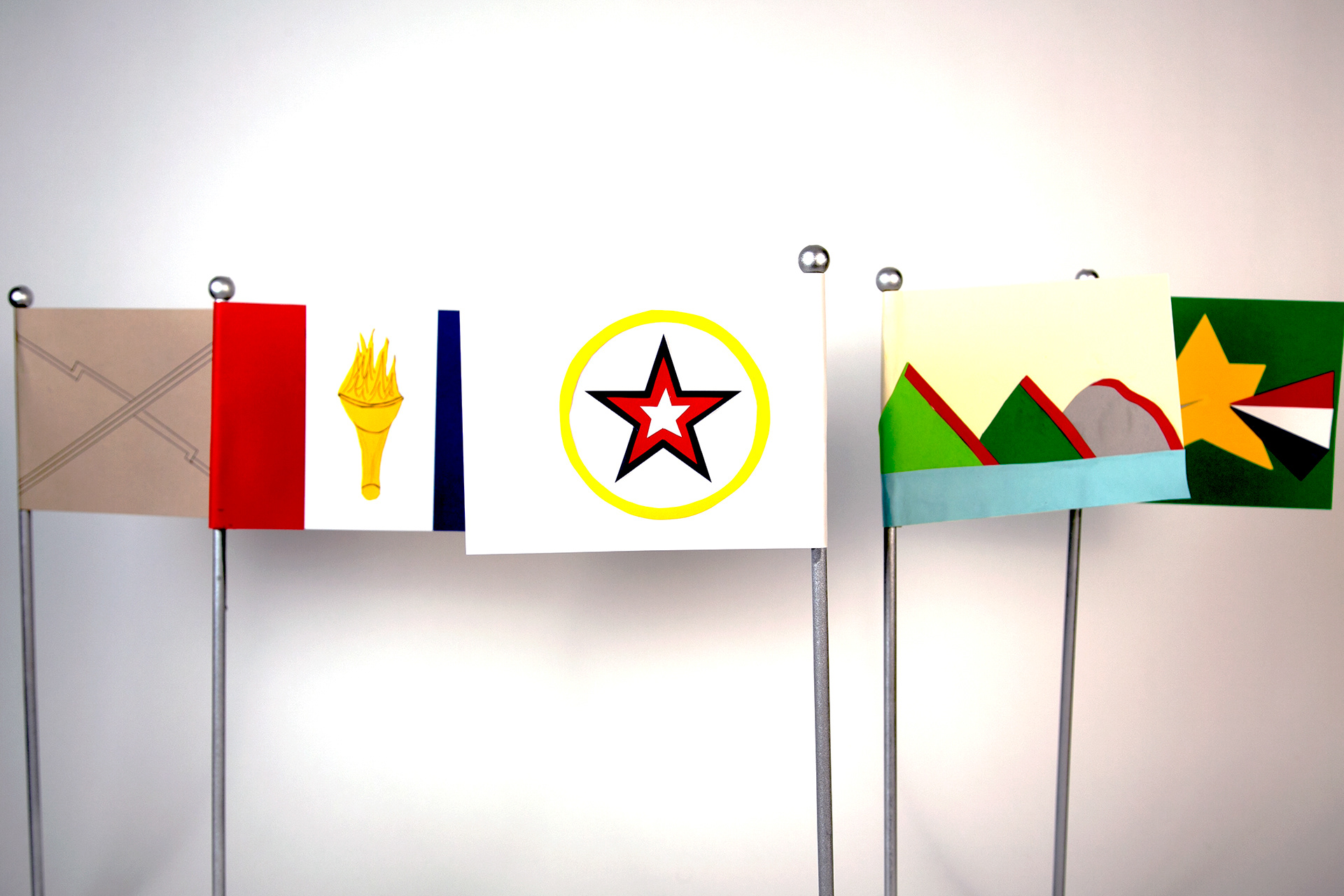

The flags symbolized many different values. However, participants felt that none of the values were necessarily exclusive of the other values. From left to right:
"We're fractured. The lines shouldn't be so straight and clean."
"I want the flag to stand for our individual liberties."
"We're a billion points of light, but unified in a circle."
"The land is the most important part of America."
"Many different backgrounds, but that makes us America."
"It's 3D... we don't know how many stars are on the other side."
"It's a character map, and it's not perfect. Like us."
"We may be far apart on the circle, but we have a common center."
Next steps
The findings and feedback from participants in these first two workshops will directly inform the design work I do during the upcoming spring semester, particularly the public-facing experience. Participants reflected uplifting values of honesty and inclusion in their ideal American futures and future flags. However, my biggest conclusion is that this workshop needs to be done many more times with more socially and politically diverse groups. It also needs to be done across the country.
Please feel free to reach out to me at hrudin@sva.edu if you are interested in hosting this workshop!
Thank you to the participants Jack, Alexia, Miguel, Erin, Joseph, Jon, Hugh, Bailey, Lacoy, and Nick, as well as to Make America Dinner Again and The Future Company for the support.